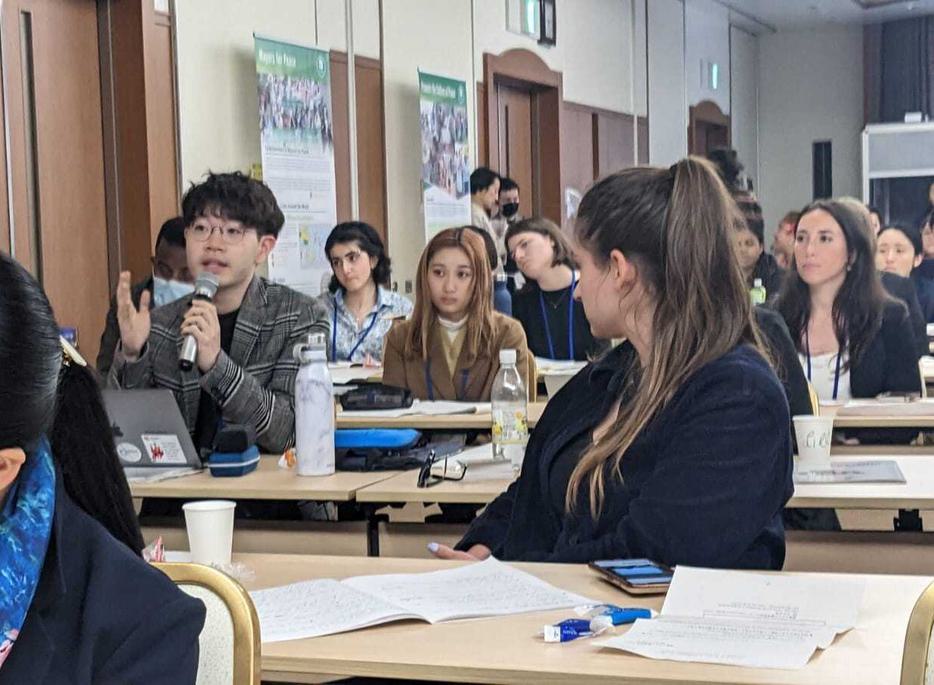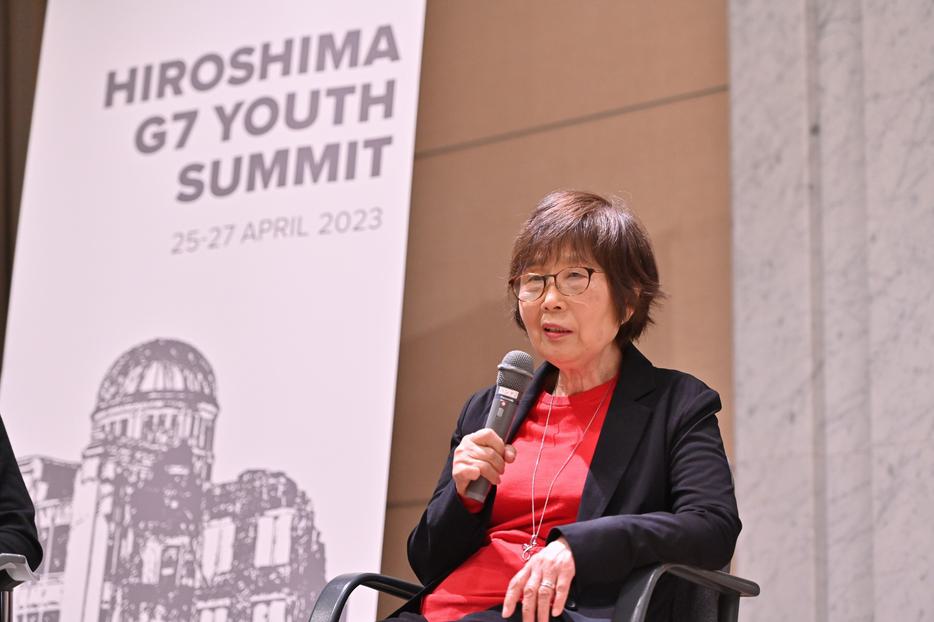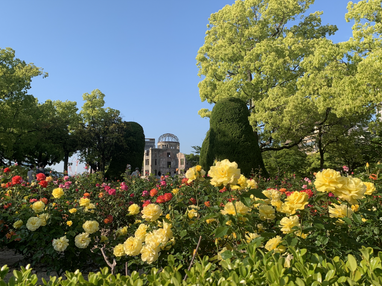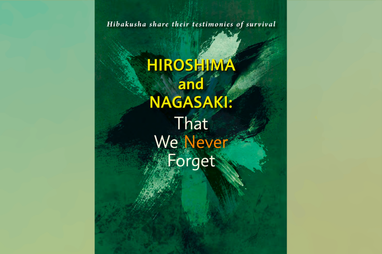
Photo credit: ICAN
Ahead of the G7 Hiroshima Summit, SGI representatives participated in the Hiroshima G7 Youth Summit held at Hiroshima University from 25–27 April, 2023, which was organized by the International Campaign to Abolish Nuclear Weapons (ICAN). SGI also co-sponsored the summit, along with other civil society organizations. Attended by 50 youth representatives from 19 countries, the summit was convened in Hiroshima, a city that experienced a nuclear attack firsthand, to teach participants the real impacts of nuclear weapons and to expand the network of youth who are committed to nuclear abolition.
The three-day summit was packed with a series of panel sessions and workshops. Participants deepened their comprehensive understanding on the inhumanity of nuclear weapons from various perspectives, such as climate, international law and culture.

Youth participants at a panel session
On the second day, participants traveled to the center of Hiroshima City to visit the Peace Memorial Museum and Park near the hypocenter of the first atomic bomb, which exploded on 6 August 1945. Upon their arrival, they had the opportunity to listen to the story of A-bomb survivor Keiko Ogura. Ogura, who was just eight years old at the time of the attack, was near her home in Ushitamachi, 2.4 kilometers from the Hiroshima hypocenter. (Read the testimonies of Ogura and other Hiroshima and Nagasaki A-bomb survivors.)
After surviving the bombing, Ogura taught herself English and has shared her testimonial countless times both in and outside Japan to spread the message for peace throughout the world. Despite experiencing the same historical events in Hiroshima and Nagasaki, each A-bomb survivor—known as Hibakusha—has their unique story of what happened under the mushroom clouds and what struggles and pains they were forced to endure for the rest of their lives.

Keiko Ogura sharing her testimony with youth participants | Photo credit: ICAN
In her testimony to the youth summit participants, Ogura shared that Hibakusha have their own invisible scars and live with a sense of guilt for surviving the atomic bombings. She asked participants to put themselves in the shoes of those who experienced the atomic bombings and, with a gentle smile but a strong voice, urged, “Don’t forget the time we met today. It is your turn. You are the hope.”
For many participants, it was their first time visiting Hiroshima and seeing with their own eyes what really happened on 6 August 1945. Depending on their home countries and backgrounds, the participants had been educated on the history of Hiroshima and Nagasaki with different, and often inaccurate, narratives. However, by visiting Hiroshima and listening to the story of a Hibakusha, they learned the inhumane, devastating consequences that even a single bomb could cause and the real threat the world currently faces from the existence of over ten thousand nuclear weapons.
I [have worked] on nuclear disarmament for a few years now, but actually I’ve never been to Hiroshima before, so for me being here was very emotional… I don’t think anybody can leave the city without thinking about nuclear abolition.
ICAN Advocacy Officer Florian Eblenkamp shared, “I [have worked] on nuclear disarmament for a few years now, but actually I’ve never been to Hiroshima before, so for me being here was very emotional… I don’t think anybody can leave the city without thinking about nuclear abolition.” He commented that visiting Hiroshima would be a significant opportunity even for those who have been working on nuclear abolition for a while in order to reconsider the issue of nuclear weapons from the humanitarian perspective, instead of the security perspective.
On the last day of the summit, the participants adopted and delivered their youth statement, which states their resolve to achieve a more just, peaceful world as leaders of today and includes 11 concrete requests to the G7 leaders.
Commitment to No First Use is a 'prescription for hope' that can serve as the axle connecting the twin wheels of the Treaty on the Non-Proliferation of Nuclear Weapons (NPT) and the Treaty on the Prohibition of Nuclear Weapons (TPNW)
On the same day, SGI President Daisaku Ikeda issued his Statement on the G7 Hiroshima Summit, the Ukraine Crisis and No First Use of Nuclear Weapons. Referring to his encounter with Dr. Bernard Lown, Ikeda states that commitment to No First Use is a “prescription for hope” that can serve as the axle connecting the twin wheels of the Treaty on the Non-Proliferation of Nuclear Weapons (NPT) and the Treaty on the Prohibition of Nuclear Weapons (TPNW). He concludes the statement by urging, “Let us once again change the course of history through the power of people, paving a path toward a world free from nuclear weapons, a world free from war.”


